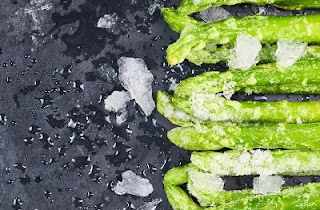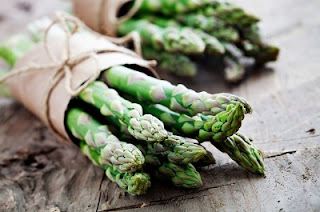Fresh Asparagus Recipes
Fresh Asparagus recipes are made of asparagus, which is a spring vegetable. Asparagus belongs to the lily family and is a flowering recurrent plant. It is usually grown as a moderate crop but also has the potential of being grown as a tropical crop.
It is a creeper just like thorny plants and is available in three colors, which are purple, green and white. Due to its sensitive flavor and diuretic properties, fresh asparagus recipes have been utilized for medicinal and culinary purposes for thousands of years. Asparagus is cultivated all over the world as a vegetable crop and is local to places in most of Western Asia, North Africa and Europe.
The origin of this vegetable is unknown. Nonetheless, it is believed that it might have originated from some place in the Eastern Mediterranean sea. These recipes were found in the oldest recipe books like the Apicius from the third AD, which is a collection of Roman cookery recipes. Romans, Greeks and ancient Egyptians ate fresh asparagus during its season and dried it for use in winter.
The shoots of asparagus turn woody and strongly favored once the buds start opening. Therefore, they are eaten when they are young. This vegetable is cooked in an assortment of ways in cuisines all over the world. Fresh asparagus is generally served as a vegetable side dish or an appetizer. Green asparagus is popular all over the world while white asparagus is extensively grown in Germany, Netherlands, France and Belgium. Purple asparagus, which was initially harvested in Italy, is still grown in countries such as United States and New Zealand. It is cooked in different ways such as stir frying or grilling. In the French cooking style, asparagus is prepared by steaming or boiling and is served with Parmesan cheese, mayonnaise, hollandaise sauce or melted butter. In the Asian culture, it is stir fried and served with beef, chicken, shrimp or is wrapped in bacon and served. Asparagus is also served as a raw salad. It can also be stored for years as a pickle and is known as marinated asparagus.
Asparagus is low in calories and a healthy choice. It is rich in zinc, calcium, magnesium and Vitamin B6. It is also an excellent source of dietary fiber, vitamin C, Vitamin A, Vitamin K, riboflavin, thiamin, niacin, folic acid, iron, phosphorous, copper, potassium, manganese and selenium. Pharmaceutical companies also utilize asparagus to make drugs that are used to treat diseases like dysentery, herpes, cough, diarrhea, and stomach ulcers caused by spices.
While purchasing asparagus, look for stems that are strong and straight, with well-formed and tightly closed tips. In respect to the common notion, the width of the stem is not a sign of tenderness, dense or thin stems can be equally delicious. Don’t overcook or you might end up with mush.



Comments
Post a Comment